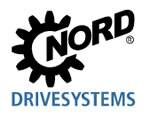The 3D Printers of CES
3D graphene: MIT scientists develop super-light, super-strong structure
CES 2017 - MarkForged 3D prints metal
3D printer builds a cube from a vat of goo "¦ using a phone screen
Manufacturers most upbeat in two years, ISM survey shows
YCF - 2017 could be year of smart factory
Dubai Govt, US startup to team up for 3D printing
What are the business and security impacts of Industry 4.0?
Using 3D Printing, Lithography & Soft Robotics: New Prosthetic Hands Made for $50 at Cornell
Japan's Rust Belt Counting on Robonomics to Run Assembly Lines
A New Use for High-Speed Fiber Optics: Connecting Smart Factories
Spanish City Installs 3D-Printed Bridge
Seven Career Paths Opening With the Industrial IoT
US Manufacturers Too Slow to Adopt Industry 4.0: BCG Study
The Rise and Fall of the Everyman Tycoon
Records 1036 to 1050 of 1277
First | Previous | Next | Last
Featured Product

NVIDIA RTX PRO™ BLACKWELL DESKTOP GPUs N
Manufacturing and Automation - Featured Company

